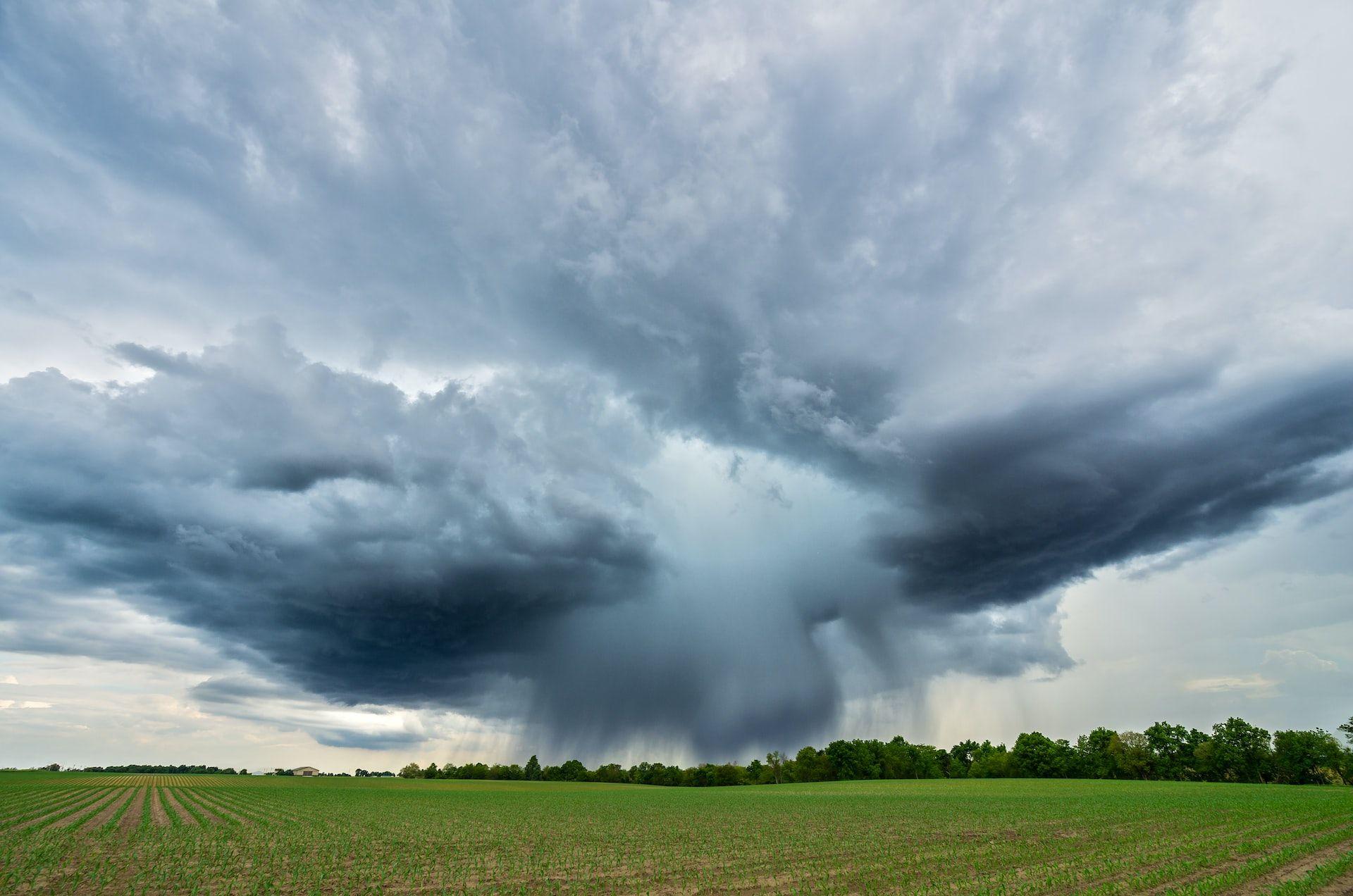· 9 min read
As an effective tool for climate risk mitigation and adaptation, insurers ought to fend for their own resilience as well. Blind spots in the form of existential chinks keep growing. Here are a handful of threats that get driven directly or indirectly - thanks to our penchant for fossil fuel resulting into anthropocentric behaviour. How do we anticipate and measure the fury of nature unleashed in response to our collective lifestyles? Do we provide and price them adequately? Are we even mindful of the extent and the central role nature and biodiversity play in our scheme of things? How do we deliver climate justice to ensure a just and equitable order? Many of the signals coincided with the COP27. Just one of them that I pick here - whether insurers, particularly in the Global North realise or not - almost drew them in.
Reducing loss and damage from climate change
With the countries at COP27 agreeing to a loss and damage fund - the proposed Global Shield is behind us. Hopefully insurers can heave a sigh of relief? Loss and Damage in the international policy debate broadly refers to efforts to “avert, minimise and address loss and damage associated with climate change impacts, especially in developing countries that are particularly vulnerable to the adverse effects of climate change” (UNFCCC Decision 3/CP.18). Generally, the terms ‘avert’ and ‘minimise’ are used to refer to mitigation and adaptation respectively, whereas the term ‘address’ refers to actions to deal with climate change impacts that have not been or cannot be avoided.
Ways to reduce loss and damage from climate change include increasing resilience before the occurrence of an extreme weather or slow-onset event - for example, by strengthening flood defences - and establishing mechanisms to provide financial or social protection support to those who have already experienced loss and damage. Insurance is one important tool but is not affordable or accessible to all. There are also opportunities to reduce loss and damage after extreme weather events by incorporating resilience into recovery, such as rebuilding infrastructure to be more climate-resilient in the future. The Loss and Damage debate has been contentious within the international climate negotiations because of questions of fairness and equity, and proving historical responsibility for climate change.
The Global Shield was being presented as a solution to help the 20 most vulnerable nations (“V20”), writes Teresa Anderson. Insurance has been pitched as an approach to climate risk management. But the contribution of insurance to addressing loss and damage would have been limited at best. The Global Shield was a political football being used to undermine the push for a real loss and damage financing facility, believes Teresa. By contributing millions to the Global Shield, G7 countries hoped to persuade insurance companies to provide more coverage in regions that are at greater risk of climate impacts. But insurance companies, by their very nature, are often either reluctant to provide coverage, or reluctant to pay out, says Teresa. Moreover, this would have amounted to governments in the Global North subsidising their own insurance corporations.
Top ten US P&C insurers
In its early days, the Biden administration sent out very strong signals by precisely addressing some of the serious concerns Professor Shiva Rajgopal of Columbia Business School flags in his three-part analysis of top ten US P&C insurers. I highlighted how the Federal Insurance Office (FIO) was poised to pivot the actionables. “So what did we learn”, asks Shiva? He benchmarks AXA insurance as the gold standard when measuring the top 10 American P&C insurers on their balance sheet capabilities to cope with climate risk.
“Some might say that American firms are simply different and respond to different social, political, and economic incentives. Fair enough. However, I worry that continued silence about climate risk might create a world where the premiums charged every year keep going up substantially. One would expect insurers should be front and center in climate risk modeling, adaptation, and mitigation. Eventually the risks involved will become so large that conventional market mechanisms may no longer be suitable, and the insurer simply exits the market making the taxpayer responsible for bailouts”.
He goes on to say: “For instance, I would not be surprised if more insurers simply exit the Florida market after Hurricane Ian. One has to wonder what kind of role should state insurance regulators and the Federal Reserve play in nudging U.S. insurers to factor in climate risk into their risk assessments or capital requirements? Should insurers work more closely with building codes and standards and states and local municipalities? Some of the insurers say they do but do we need more? We need to build better and in better locations.Insurance is the lifeline that facilitates private sector risk taking. It is perhaps in our collective self-interest to ensure that the private market functions well and the industry manages oncoming climate risks in a cost-effective manner. If the industry fails or falters in that endeavor, the collective costs we may bear, as residents, property owners and taxpayers, in the future might be immense”.
Climate models fail to capture strengthening wintertime North Atlantic jets and impacts on Europe
Europe accounts for a significant asset class concentration. The recent spate of floods, hurricanes, heatwaves and droughts represent a new normal. The winter time North Atlantic jet streams have different implications for North, South Europe and the Mediterranean. Are the climate models letting us down?
Climate models are one of the primary means for scientists to understand how the climate has changed in the past and may change in the future. These models simulate the physics, chemistry and biology of the atmosphere, land and oceans in great detail, and require some of the largest supercomputers in the world to generate their climate projections. They are constantly being updated, as different modelling groups around the world incorporate higher spatial resolution, new physical processes and biogeochemical cycles. These modelling groups coordinate their updates around the schedule of the Intergovernmental Panel on Climate Change (IPCC) assessment reports, releasing a set of model results - known as “runs” - in the lead-up to each one. These coordinated efforts are part of the Coupled Model Intercomparison Projects (CMIP). The 2021 IPCC sixth assessment report (AR6) introduced the new state-of-the-art CMIP6 models.
CMIP6 allow researchers to investigate specific aspects of the climate system, from clouds to deep ocean circulation to an interactive carbon cycle. However, it confronts a number of new challenges. More centers will run more versions of more models of increasing complexity. An ongoing demand to resolve more processes requires increasingly higher model resolutions. Archiving, documenting, subsetting, supporting, distributing, and analyzing the petabytes of CMIP6 model outputs challenge the capacity and creativity of the largest data centres and fastest data networks.
Projections of wintertime surface climate over Europe, for instance, depend on reliable simulations of the North Atlantic atmospheric circulation from climate models. However, it is unclear whether these models capture the long-term observed trends in the North Atlantic circulation. Over the period from 1951 to 2020, the wintertime North Atlantic jet has strengthened, while model trends are, on average, only very weakly positive. “Whatever the cause or causes, our results show that regional climate projections of the winter atmospheric circulation and associated impacts over Europe that rely on CMIP6 models may not be reliable”. With a CMIP7 task force in place - will it lead to overcoming such challenges?
Pricing risk and investments
Climate change is increasingly being viewed as a systemic risk, and the valuation of climate change risks (both physical and transition risks) represents a complex and multi-dimensional process for which there is currently no agreed-upon industry standard. Due to the inherent complexities of climate change risk, many investors are not factoring these risks into their investment valuations, or they are doing so at a broader sector or industry level, leaving investment / company level climate change risk as a largely unknown, unpriced, and yet very material risk in their portfolios. If there was a sudden repricing of climate change risk, we could see the same impact that we witnessed during the financial crisis, warns Tamara Close. Moreover insurers ought to be also mindful of all the externalities when pricing a risk not just investments. Needless to mention fossil fuel segment which is expected to end up as a stranded asset.
Climate: Where is the litigation train heading, and how much speed will it gather?
Environmental, Social and Governance (ESG) for sure is the engine. A path breaking report ‘Riding The Dragon’, by The Blended Capital Group, charts the evolution of ESG law and its implications. On a more positive note, there is growing understanding of the importance of nature and biodiversity in the fight against climate change. The Taskforce for Nature Related Financial Disclosures (TNFD) promises to grow in relevance, as has the Taskforce for Climate Related Financial Disclosures (TCFD). Litigants are starting to turn their gaze to the protection of nature and biodiversity, and legal practitioners have started to conceptualise a new “framework by which biodiversity-related liability risks should be considered by financial sector supervisors and participants in their broader assessment of biodiversity-related financial risks.” With clearer and clearer evidence of the interdependence of climate and biodiversity, it is hoped that strategic climate litigation will play a positive role in ensuring that a comprehensive approach is adopted to tackle the twin climate and ecological crises. Just as it has in the past, it is expected that climate litigation will continue to play an important role in holding decision-makers in the public and private spaces accountable to the law, and in clarifying and refining legal obligations in a fragmented landscape posing multiple, urgent challenges.
Climate litigation has grown vertiginously in recent years, alludes the report. The LSE Grantham Institute’s Global trends in climate change litigation: 2022 snapshot notes that “globally, the cumulative number of climate change-related litigation cases has more than doubled since 2015. Just over 800 cases were filed between 1986 and 2014, and over 1,200 cases have been filed in the last eight years, bringing the total in the databases to 2,002. Roughly one-quarter of these were filed between 2020 and 2022.” The range of cases filed touches on an increasing number of wildly different issues - they go from cases where individuals sue states for the state’s failure to limit emissions or adapt to climate change, to cases where states sue high-emitting corporates to recover the costs of adapting their cities to climate change, to greenwashing or climate washing claims, to claims seeking to hold directors personally liable for climate-related breaches of duty.
In conclusion
These are but some of the chinks. Fossil fuel as well as impaired biodiversity and pollution driven losses are set to rise and we should be getting into a growing litigation mode. Given the trends, does it call for much imagination to see Prof Shiva Rajgopal’s apprehension coming to fruition? From steady redlining of rising uninsurable risks to a flood of climate related claims could see many insurers and reinsurers disappear. Rather than physical and transition risks, liability risk could become preeminent. With all the good that insurers do, they deserve not to be caught with their heads in the sand. The signals are clear if only they switch off all the noise! The prescription is simple. Stop underwriting and investing whatever runs counter to the Planet’s health. Loss and damage will not compensate insurers.
Illuminem Voices is a democratic space presenting the thoughts and opinions of leading Sustainability & Energy writers, their opinions do not necessarily represent those of illuminem.






